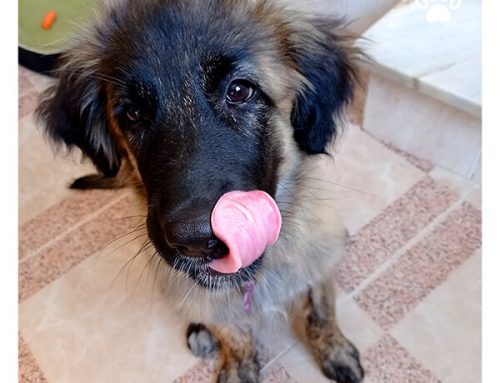
When to take your dog to the emergency vet
There are some basic guidelines you can follow to help assess the urgency of the situation:
- Anxiety or restlessness
- Inability to rest or sleep through the night
- Constant coughing
- Constant panting
- Fever
- Coughing up pink, foamy liquid or blood
- Abnormal gum color (e.g., pale gums, blue gums, yellow gums)
- An elevated heart rate (>160 beats per minute)
- Paralysis or dragging of the back legs
- A significant amount of bleeding
- Abnormal vaginal discharge
- Abnormal odor from the body
- Feeling very hot or cold to the touch (<99 or >103.5)
- Any abnormal behaviors or personality changes (e.g., clingy or unapproachable)
- Inability to deliver puppies (over two hours between puppies)
It is essential to know that dogs can be masters of disguising their pain, and some symptoms may be subtle and easy to miss. For instance, a dog with a fever may feel warm to the touch, but they may not necessarily show any other signs of illness. Hence, it is crucial to know your dog’s behavior, habits, and routines to identify any unusual changes that could indicate an underlying health issue. Moreover, it is essential to note that some breeds are more susceptible to certain health conditions, and it is vital to know your dog’s breed-specific risks and potential health issues. For instance, some breeds are more prone to bloat, while others have a higher risk of developing hip dysplasia. By being aware of your dog’s breed-specific risks, you can take preventative measures and be on the lookout for any symptoms that could indicate a problem.
Big-time emergency signs
Although the guideline is a list of common urgent symptoms to look out for, some big-time emergency signs will require immediate veterinary attention in dogs, such as:
Difficulty breathing
If a dog has trouble breathing or making alarming noisy breathing sounds, they are having respiratory distress. A dog with an elevated respiratory rate or panting from being excited or exercising is different from having trouble breathing.
Signs of bloat

The common signs of bloat include:
- Swollen or distended abdomen
- Attempts to vomit with no success
- Pacing around
- Panting
- Excessive drooling
- Taking a “play bow stance” (front elbows on the floor and hind end in the air)
While the cause of bloat is still unknown, there are some risk factors associated with the condition. For instance, large and giant breeds like Great Danes, Boxers, and Dobermans are more prone to bloat due to their deep chests. Additionally, feeding your dog one large meal a day, feeding them from a raised bowl, and exercising them vigorously after eating can increase the risk of bloat. Furthermore, if you suspect your dog has bloat, it is essential to seek immediate veterinary care, as any delay in treatment could be fatal.
Seizures
A single seizure is not necessarily an emergency. Still, there are some signs that a dog’s seizure is cause for emergency care:
- The seizure is lasting for more than 2 to 3 minutes
- Multiple seizures happening in 24 hours (also known as “cluster seizures”)
- Any seizure that is associated with a toxin ingestion
Lethargy or collapse
Collapse or profound weakness could be symptoms of major problems such as cardiac compromise, internal bleeding, anaphylactic shock, organ failure, or certain poisonings.
Major known trauma
Open wounds, profuse hemorrhage, possible broken bones, or injury due to trauma such as a fall, hit by a vehicle, or from an altercation with another dog or animal (bite or attack wounds on the body even if minor) is a clear sign of an emergency.
Prolonged vomiting and/or diarrhea
A dog who vomits once or has a single loose bowel movement may not need urgent care. Still, it is worrisome if it becomes repeated vomiting and diarrhea and if the liquid is significantly bloody.
Vomiting and diarrhea are common symptoms in dogs, and they can be caused by several factors, including eating something they shouldn’t have, intestinal parasites, and viral or bacterial infections. However, if your dog is vomiting or having diarrhea for an extended period, it could be a sign of a more serious underlying health issue. For instance, it could be a sign of pancreatitis, kidney disease, or even cancer. Therefore, it is essential to monitor your dog’s vomiting and diarrhea closely and seek veterinary care if it persists for more than 24 hours or if it is accompanied by other symptoms like lethargy, loss of appetite, or abdominal pain. Additionally, dehydration is a significant concern when a dog is vomiting or having diarrhea. Therefore, it is essential to ensure your dog has access to plenty of clean water and to monitor their water intake closely. If your dog is unable to keep down water, seek veterinary care immediately.
Not eating or drinking
If a dog refuses to eat or drink for an entire day or longer, they are almost always sick.
Exposure or ingestion of any poison or toxin

Most common dog toxicities that require immediate care include:
- Human foods such as chocolate, grapes, onions, garlic, macadamia nuts, gum
- OTC and prescription medicine such as Advil, Tylenol, vitamins, antidepressants, birth control pills
- Outdoor and indoor house plants such as Ivy are poisonous to dogs. Numerous other toxic plants are dangerous to dogs, which you can read in Puppy care guide: week by week.
- Rodenticides or rat and mouse bait have a sweet taste that attracts dogs. If not treated immediately, it can cause bleeding issues.
Eye problems or eye injury
A small amount of discharge may not be an emergency, but there are some eye problems and symptoms that will require attention:
- If a dog is in pain (pawing at the eye, squinting, sensitivity to the light)
- A sudden change in color to one or both eyes
- Swelling of the eyelids
- One eye looks bigger than the other or “bulging”
Squatting to urinate without producing any urine
It is an emergency if a dog cannot pass urine. For male dogs, it could be a sign of crystals or stones in the urethra or a urinary tract infection for female dogs.
Symptoms to look out for:
- Straining to urinate but producing no urine or only small drips of urine produced
- Bloody urine
- Licking at the genitals frequently
Severe pain
A dog that is in severe pain and agony will need immediate care. Symptoms of pain in dogs include:
- Vocalizing
- Excessive panting, whining, shaking
- Crying or yelping
- Aggression
- Growling
- Reluctant to play or interact
- Limping
- Low posture
- Become depressed and stop eating or drinking
- Being quiet, less active, and hiding
- Increased heart rate
Saved by VetBot!
We highly recommend bringing your dog to their routine vet visits to prevent health issues and keep up with their puppy vaccination and vet schedule.

If you think that your dog is experiencing a true emergency, then the best thing to do is call your vet or your local emergency veterinary hospital. They can help assess what you should do to keep your beloved companion safe and healthy.






